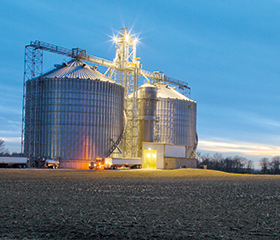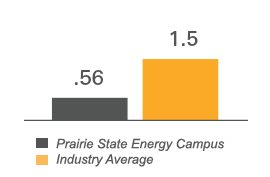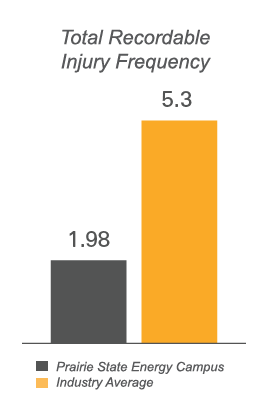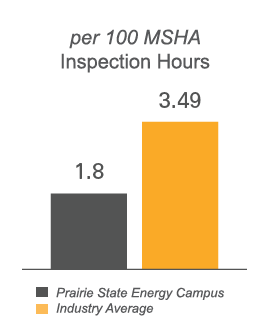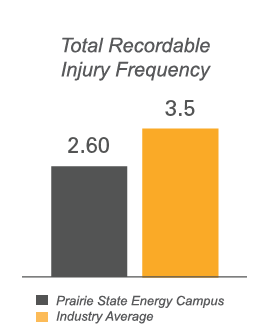Discover What Public Power Means to Us.
The Prairie State Generating Company, LLC is a model for the future of energy. As one of the largest energy projects in the United States, Prairie State serves as an example of how legislators, regulators, public power agencies, corporations, and communities can work together to provide domestic, reliable, and environmentally friendly energy to a region.Prairie State Generating Company
People. Power. Community.
For decades, public power utilities and rural electric cooperatives have been meeting the needs of their customers with responsible and affordable power, exceptional service, and a local focus on community initiatives. The power is quite literally in the hands of the public, as rates and generation decisions are made by members of the communities they serve.
To reliably meet growing power demands and ensure customers stable rates for the future, eight public power agencies and the world's largest coal company invested in a technologically advanced electrical generation facility and adjacent coal mine, now known as the Prairie State Energy Campus (PSEC). Since 2012, Prairie State has been providing base-load electricity on behalf of its owners to more than 2.5 million families, across 180 communities from Missouri to West Virginia.
Public power agencies are able to prepare for inevitable market changes, by hedging future risk and investing in their own sustainable generation assets. The public power investment in Prairie State is an example of progressive planning. Energy Expert and Former Director of the Illinois Power Agency, Mark Pruitt, further explains generation asset investment analysis in the October 2012 issue of Illinois Country Living Magazine.
"My Sunday school teacher used to ask ‘When did Noah build the Ark? It was before the rain.' It was hard for Noah, with years and years of effort and everyone wondering why he did it. I personally believe that electric co-ops are doing the hard work necessary in the current challenging times to prepare for the long-term best interests of their members. And I would suggest that co-op members are likely to be thankful in the future for the foresight that co-op leaders have demonstrated."
Prairie State and its employees maintain the same principles, as set forth by public power: to supply our owners with reliable power produced in a safe and environmentally responsible manner. Upholding our mission has some added benefits, including supporting the economic growth of our campus's home community in Washington County, Illinois.
In 2013, Prairie State's power plant continued on its path of progress. While the year had its operational challenges, it did yield many changes and actions that will produce important improvements in Prairie State's performance in the years to come. The power plant successfully completed its first scheduled maintenance outage in the fall on Units 1 and 2, making significant progress on increasing future reliability. Throughout the year, Prairie State's team of industry experts worked urgently and aggressively to mitigate issues as quickly as possible, while maintaining safety and compliance standards well above the industry average. Prairie State's senior leadership team members have an average of more than 30 years of diversified industry experience. Prairie State is actively developing and deploying strategies, including human error prevention tools, in order to achieve much higher reliability while driving towards a zero-accident and injury environment for all its employees.
Through February of 2014, Prairie State's power plant is exceeding its budgeted availability numbers and is focused on continued reliability improvement throughout the year. With an intense focus on our company's core values: safety, integrity, stewardship, respect, and innovation, the Prairie State Energy Campus will continue to move energy forward in communities across the Midwest for decades to come.
-

In our community
Through Prairie State's contribution and dedication to the community, a new Lively Grove Township Hall was constructed. -

In our community
PSGC's location within the West Washington County School District enabled the completion of a new K through 12 facility, with a reduced building fund contribution for local taxpayers. -

In our community
PSGC has hired more than 250 local vendors and suppliers, spending more than $80 million in Washington County, IL.











